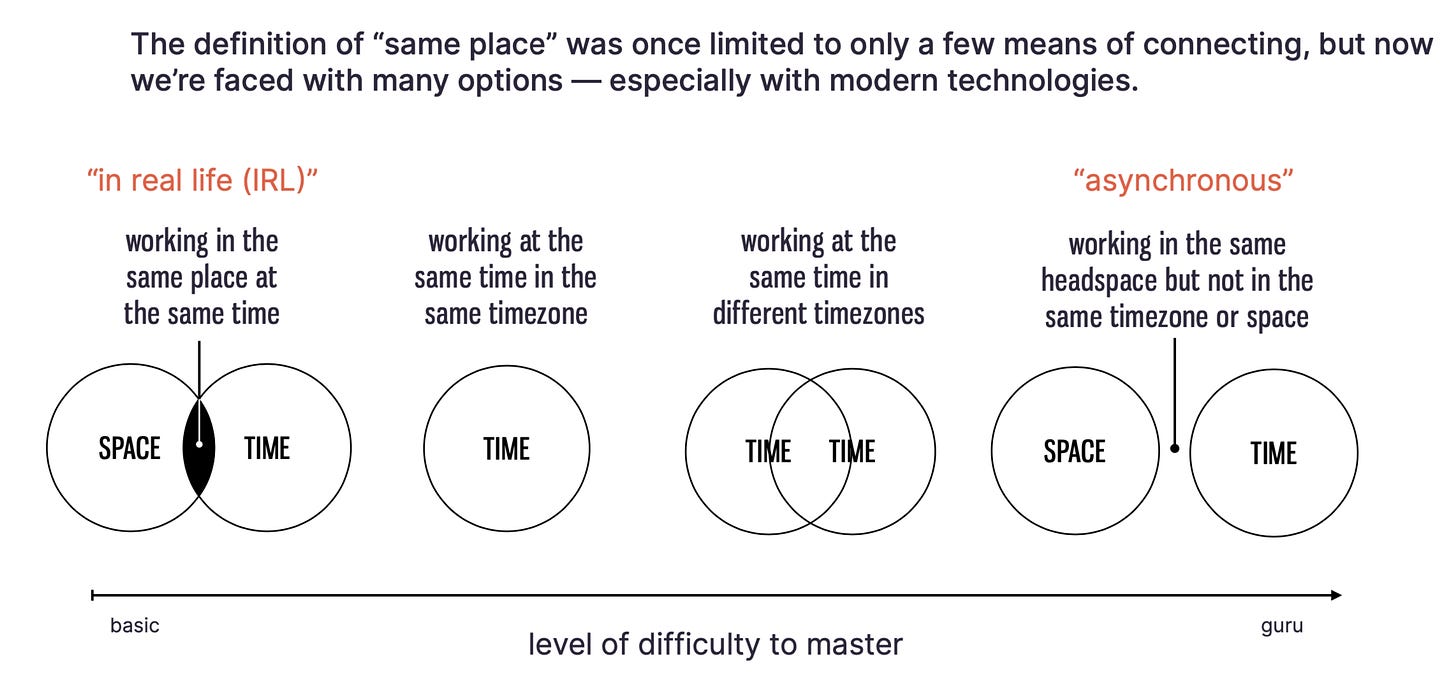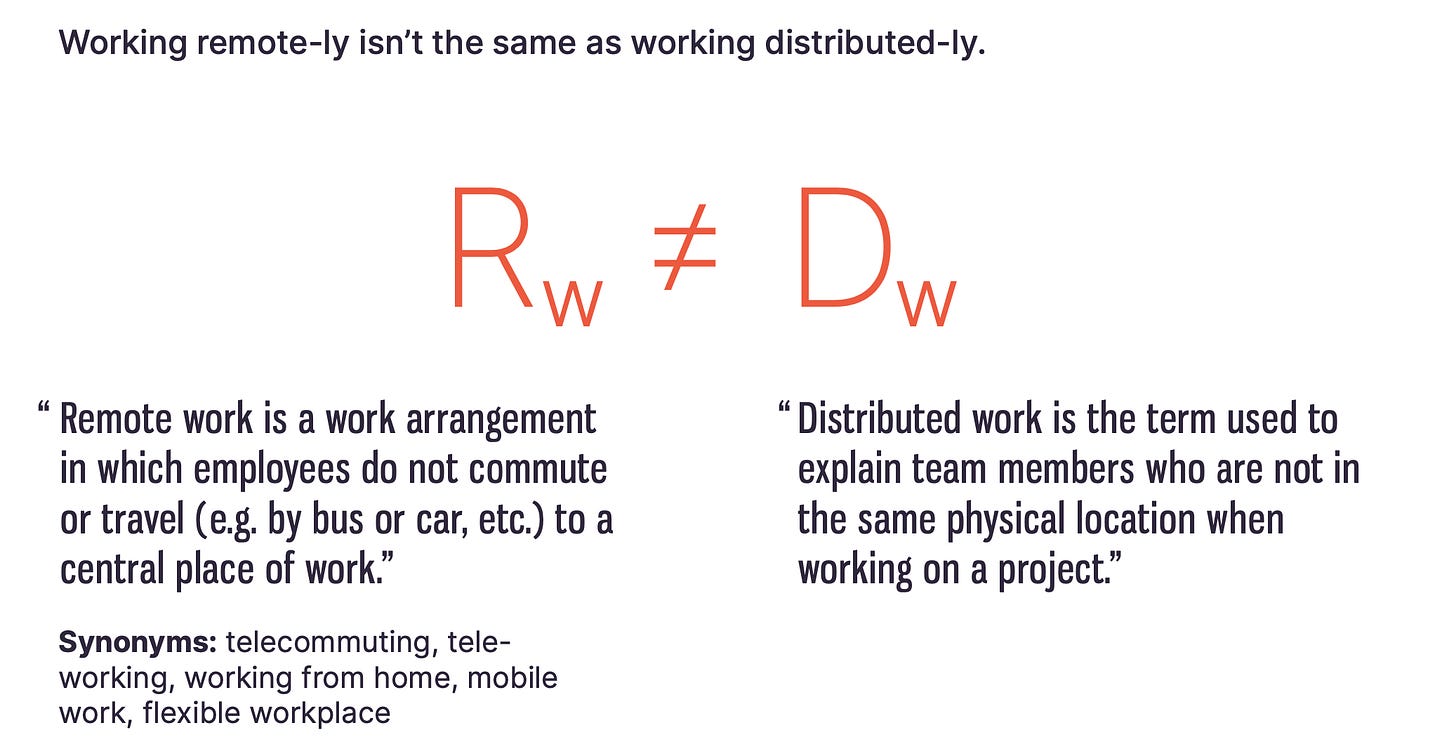Distributed organization: The basics
Here are some quick insights into what distributed organizations are and what you need to think of when you go ‘Distributed’.
What a distributed organization is:
Distributed - No central office space.
Decision making happens asynchronously.
Employees are free to work from their desired location and are not expected to travel to a common office space.
All communication happens online and is open for anyone in the organization to participate in.
Employees are not expected to be online/working at any particular time window (Other than a few specific teams).
100% transparent - all conversations, decisions, documentation, meetings, and meeting notes are open to the entire organization.
What a distributed organization is not:
Has a prominent central office space where the majority of the workforce works from.
Where Work-from-Home is optional or based on 'permissions'.
An organization that works only with outsourced employees, freelancers, or subcontractors.
A co-working space where people freelance on similar projects.
A large company where most people work from home most of the time.

Source: The remote working playbook by STEVEGLAVESKI.COM/r
Remote vs Distributed vs Telecommuting
Distributed:
No centralized office exists. All employees work in separate locations and communicate via online platforms.
Telecommuting:
Telecommuting organizations don't expect employees to come into work but do require them to reside in a specific country, region, or state. This is mainly due to tax reasons, logistics of travel, etc.
Remote:
In fully-remote organizations or FROGs, employees mainly work from home but may be periodically expected to travel to a central location.

Source: The remote working playbook by STEVEGLAVESKI.COM/r
The 'distributed' advantage
Here are some of the top advantages of being 'Distributed':
Global coverage
Organizations can have a presence at strategic locations with employees knowing the local language, culture, and policies.
Available 24 hours a day globally.
Massive cost savings w.r.t setting up physical offices in different locations.
"The typical business saves $11,000 per person, per year, by letting employees work remotely 50% of the time" (*breakup of this data is unavailable) - Lifesize survey result
Hire talent from across the map
Organizations can hire talent regardless of their base location.
Organizations don't have to be restricted to a physical space or time and build diverse and inclusive teams. This definitely adds a competitive advantage in the market.
"More than 82% of millennials who work remotely report an increased sense of loyalty to their employers as a result" - Lifesize survey result
Flexible schedule & work
Employees can work from wherever they want and manage their time better.
Employees can avoid the commute to work and spend more meaningful time at home. Organizations can then move from measuring working hours or days to focusing on purpose and results.
"91% of remote workers say they have a better work-life balance" - Lifesize survey result
“Instead of taking the mediocre candidate in your area, you can hire the superstar who lives on the other side of the country. Limiting yourself to hiring within your locality restricts you to a small talent pool.” (hackernoon)
Known challenges in this model:
Having a company culture
Motivating the employees
Communication
Language & cultural barriers
Adjusting to the new working model
Coordination
Infrastructure (connectivity & space)
Tracking & measuring performance
Identifying the right talent
Resentment and imbalance can build up between those who "get to stay at home" and those who "get to have lunch with the boss every day"
Focus areas to make this shift:
Org-wide alignment on the idea of going 'distributed'
Communicating culture and values
The personal well-being of employees
WFH infrastructure assistance
Inter-team collaboration
Relooking at organizational policies
Organizational structure and design
Technology readiness
Communication systems
Logistics management
Current employee assessment to thrive in a distributed environment
Security & compliance
Realigning performance metrics
***
Project Kintsugi, a System-Design-driven initiative, aims to deep-dive into understanding and researching remote and distributed workspaces to make our transition into a fully-distributed organization a reality.
Written by Sana & edited by Rohit Nair.

